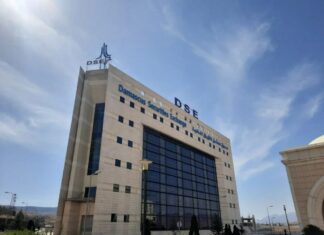
As Israel escalates its military campaign in southern Lebanon, thousands of Lebanese civilians and Syrian refugees who had previously fled to Lebanon are now seeking refuge in neighboring Syria. However, those crossing the border into Syria find themselves facing new dangers and hardships under the Assad regime.
While Assad has kept Syria out of the recent conflict between Israel and Hezbollah, his government has actively exploited the crisis to gain political and economic leverage. This has created a stark contrast in the treatment of Lebanese refugees and returning Syrian nationals, both of whom are struggling to survive under challenging conditions.
Lebanese civilians fleeing Israeli bombardments, along with Syrians who had sought refuge in Lebanon years prior, are now crossing the border back into Syria in increasing numbers. According to the regime’s Immigration and Passports Department, more than 22,000 Lebanese and nearly 65,000 returning Syrians entered the country in the wake of the Israeli attacks. However, Assad’s response to this humanitarian crisis reveals a calculated effort to profit from the event.
While publicly expressing solidarity with the displaced, his regime has been accused of using the influx of refugees to extract foreign currency and garner international sympathy. For returning Syrians, entry into the country comes at a high price—they are required to exchange $100 into Syrian currency at a state-set rate, far below the black-market value. Although this requirement has been temporarily suspended for a week, the regime has already collected an estimated $50,000 in fees.
Moreover, Lebanese refugees entering Syria have been subject to different treatment than Syrians. Assad’s swift response, marked by emergency government meetings and media shows of humanitarian aid distribution, appears designed to polish the regime’s image internationally, showing him as a welcoming host for refugees in need.
Meanwhile, returning Syrians face a much harsher reality. Many are blocked from entering shelter facilities, as the Assad regime prioritizes these resources for Lebanese refugees. In Hama, Syrian returnees have been stranded at bus depots for days due to fuel shortages and limited transportation, despite promises from the governor that buses would be provided.
These Syrians, many of whom are from the provinces of Deir Ezzor, Raqqa, and Hasakah, have been left to sleep at the departure stations without adequate shelter, food, or heating. Requests to move into shelters, which have been readily offered to Lebanese refugees, have been denied. Instead, Lebanese families have been provided logistical and relief assistance, highlighting a significant disparity in treatment.
Assad has framed the influx of refugees as a “burden that Syria must bear,” all while quietly benefiting from the foreign exchange generated at the borders and seeking international aid to support those arriving. For Syrian returnees, many of whom fear retribution from the regime or forced conscription into the military, the prospects are bleak. Those returning to their home country face a lack of basic services, ongoing security threats, and the regime’s restrictive policies.
International organizations, including the UN, have expressed concern about the rapidly worsening situation. With 16.7 million Syrians already in need of humanitarian aid and the onset of winter, the influx of refugees is putting additional strain on an already overstretched system. The UN Office for the Coordination of Humanitarian Affairs (OCHA) has warned that the region cannot “bear the burden of further humanitarian emergencies.”








